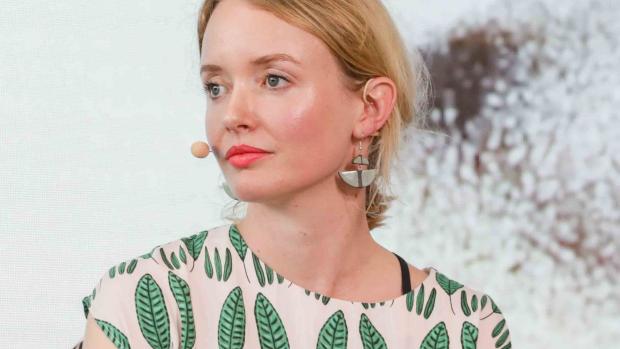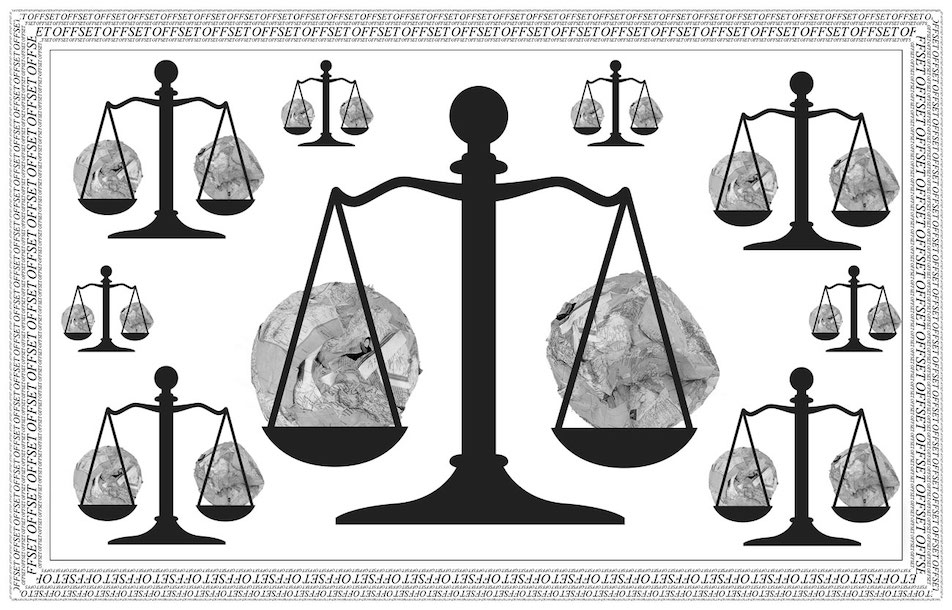How effective are carbon offsets?
Tega Brain wins a Creative Capital Award to take an unconventional look at the issue

Industry Associate Professor Tega Brain
Industry Associate Professor Tega Brain, who teaches in Tandon’s Integrated Design & Media program uses art to explore issues surrounding climate change. What technological interventions are most effective? What behavioral changes might we employ? Are we even asking appropriate questions that will lead to solutions?
This month, she and frequent collaborator Sam Lavigne of the University of Texas at Austin won a 2023 Creative Capital “Wild Futures: Art, Culture, Impact” Award, bestowed upon “risk-taking projects that push boundaries formally and thematically, venturing into wild, out-there, never-before-seen concepts, and future universes real or imagined.”
Their winning project, “Offset,” investigates carbon accounting and carbon markets, seeking to catalyze conversations about how they work and what they leave out.

“Carbon offsets apply the logic of capitalism to our atmospheric interactions,” Brain and Lavigne explain. “This logic assumes that all activities on Earth can be quantified and abstracted (by means of a price) and therefore exchanged. Based on this reasoning, carbon offsets operate off the presumption that it is possible to export or outsource the effects of one’s decisions — whether at the scale of the individual, the community, or the nation-state — to someone or someplace else, or even to future generations. In this way, existing carbon-offset markets act to maintain a status quo rather than address root causes of the climate catastrophe.”
The pair envision creating an alternative offset market focusing on environmental activism — a more effective method of effecting change than carbon emission trading initiatives, which are sometimes little more than an attempt at “greenwashing” on the part of large companies, which engage in faulty accounting or overestimate the quantitative benefits of planting trees or deploying carbon-capture technology. By contrast, direct action–particularly indigenous-led activism — has prevented an estimated 800 megatons of CO2 emissions over the last decade, a much larger amount than the estimated avoided emissions achieved by the voluntary carbon market.
Emissions avoided because of activism — whether that be gardening in vacant lots or blockading a delivery of fossil fuel — have never been part of the accepted equation and so they are exploring how to take those overlooked acts into account while also acknowledging that the wide-ranging benefits of direct environmental action are actually impossible to quantify exactly. (Planting an urban garden, for example, has not only a measurable positive effect on air quality but also beautifies a community, presents an educational opportunity for local children, and, in many cases, provides food.)
The project will consist of an online platform, and a physical installation including video and graphics. Any revenue that accrues from carbon credits sold through the project would be donated to climate activist groups. While there is a tongue-in-cheek element to their proposal, and a touch of humor, they are intent on seeing an alternative carbon marketplace up and running and are now aiming to have their offset-accounting plans officially approved by a regulatory agency.
Christine Kuan, the president and executive director of Creative Capital praised “Offset” as one of the 2023 cohort’s “visionary projects that will influence our communities, our culture, and our environment,” and it is just the latest such visionary initiatives conceived by Brain, who practices what she has called “eccentric engineering.”
Among her other environmentally informed works, situated at the intersection of art and technology, are:
- Solar Protocol, which spotlights how much energy is consumed by the Internet, the devices and systems using it and the servers that support it–equivalent, she says, to that used by the world’s airlines. The winner of a Mozilla Creative Media Award, Solar Protocol comprises a web platform hosted across a network of solar-powered servers set up in locations around the world. In stark contrast to large-scale, high-volume web services that algorithmically direct network traffic to whichever server gives the quickest response time, usually the closest geographically, Solar Protocol, with about a dozen volunteer-run server nodes around the world, uses the sun’s interaction with Earth as the cornerstone. How the sun shapes daily behaviors, seasonal activities and the decision-making of almost all life forms becomes the “logic” used to automate decisions in the digital network.
- Coin-Operated Wetland, an installation aimed at drawing attention to human destruction of the world’s vital wetlands, involves two washing machines of the type you’ll see in any laundromat. A pump and set of pipes connects them to a small-scale wetland Brain constructed from clear boxes filled with aquatic plants, dirt, and water. Another box holds the filtered water. Inspired by the Chesapeake Bay, the largest estuary in the country, the installation can actually be used to do laundry and asks viewers to fundamentally rethink their place in the environment. In theory, Brain says, if we were willing, the principles of an ecosystem like this, in which humans and nature collaborate, could be extended to entire cities.
- Deluge Data, Data Deluge, an online talk series and in-person symposium that explores the potentials and limitations of flood sensing, such as those from another project in which Brain is involved: Floodnet, the first-ever New York City flood-monitoring network, which is set to expand to 500 sensors over the next five years.
“Tandon’s encouragement of intersectional work that crosses the borders between disciplines and methods allows for out-of-the-box work like mine,” Brain says. “With both emerging media and sustainability being areas of focus here, the stage is set for creating new ways of looking at the environment and new methods of repairing the damage done to it.”

